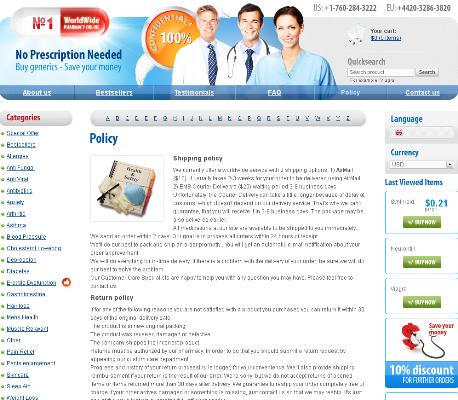Maximizing Ventolin Effectiveness: Pro Tips
Mastering Your Inhaler Technique for Best Results
Perfecting your Ventolin inhaler technique can make a world of difference when you need fast relief. Many people think a quick puff will do the trick, but the way you inhale the medicine is just as important as when you take it. Imagine trying to drink through a straw but not sealing your lips around it—you’d hardly get any liquid, and the same goes for inhaler use if your technique is off.
To get the most medication to your lungs, start by shaking the inhaler well, breathe out fully, then seal your lips tightly around the mouthpiece. As you press the canister, take a slow, deep breath in, allowing the medicine to reach deep into your airways. Holding your breath for about 10 seconds ensures the medicine settles where it’s needed most.
| Step | Action |
|---|---|
| 1 | Shake the inhaler thoroughly |
| 2 | Breathe out completely |
| 3 | Seal lips tightly around mouthpiece |
| 4 | Press down and inhale slowly and deeply |
| 5 | Hold breath for 10 seconds before exhaling |
Timing Dosage: When to Use Ventolin Wisely

Asthma symptoms can strike suddenly, turning a normal day into a struggle to breathe. Using your Ventolin inhaler just as symptoms begin—such as mild coughing, wheezing, or chest tightness—can stop an attack before it worsens. Don’t wait until symptoms are severe; catching them early means quicker relief and less stress on your airways.
On days filled with triggers like pollen, exercise, or cold air, plan ahead. Using your Ventolin inhaler shortly before exposure helps protect you, allowing you to stay active and in control.
Recognizing Early Asthma Warning Signs Fast
It often starts with a faint tightness in your chest, or that telltale wheeze whispering as you breathe out. Many people brush off these first hints, but catching these signals early can make a huge difference. That slight cough, especially after exercise or during allergy season, might not seem urgent, yet it’s often your body’s way of warning you. Acting quickly means you’re less likely to face a full-blown asthma attack.
Keep a close eye out for changes in your breathing patterns—perhaps you find yourself getting winded faster than usual. Pay attention to increased nighttime coughing or a sudden need to use your ventolin inhaler more frequently than normal. These subtle shifts mean your airways are starting to react, and prompt action can prevent escalation. Take notes and share these observations with your healthcare provider, so you can adjust your asthma management plan before problems intensify.
Combining Ventolin with Other Asthma Strategies

Managing asthma rarely relies on a single solution. While a Ventolin inhaler offers fast relief during flare-ups, its effectiveness increases when paired with a comprehensive plan. Techniques such as regular use of a preventer inhaler, practicing breathing exercises, and identifying personal triggers all contribute to improved control over symptoms.
Consider daily lifestyle choices as part of your asthma routine. Activities like maintaining a clean environment and avoiding allergens can prevent many attacks before they begin. Keeping the Ventolin inhaler accessible ensures immediate action if symptoms arise, but long-term stability often comes from these supportive measures.
Partners in care, such as healthcare providers and family, play a critical role. By working together, monitoring changes, and developing action plans, you create the best chance at a symptom-free lifestyle instead of simply reacting to emergencies.
Avoiding Common Mistakes That Lower Effectiveness
It’s easier than you think to accidentally reduce your Ventolin inhaler’s effectiveness—simple missteps can make a big difference. Forgetting to shake the inhaler before use, skipping regular cleaning, or not waiting long enough between puffs are just a few common slip-ups. Even using an expired inhaler can leave you under-protected without realizing it.
Creating a routine around your inhaler use, and double-checking each step, ensures you get the intended relief every time. Always use a spacer if your doctor recommends one—it maximizes medicine delivery. Small improvements in your technique can prevent wasted doses and help you stay in better control of your symptoms.
| Common Mistake | Impact | Solution |
|---|---|---|
| Not shaking inhaler | Ineffective dosing | Shake well before each use |
| Skipping cleaning | Clogged mouthpiece | Clean weekly |
| Expired inhaler | Reduced medicine strength | Check expiry regularly |
Tracking Progress and Adjusting Your Action Plan
Asthma control isn't static—it shifts with changes in environment, activity, and overall health. By keeping a daily record of symptoms, peak flow readings, and inhaler use, you start to notice subtle trends that might otherwise slip through the cracks. This kind of proactive monitoring lets you catch patterns and respond before small issues become major flare-ups.
Over time, share your log with your healthcare provider to fine-tune your approach and make adjustments as needed. The more details you provide, the easier it becomes to tailor your Ventolin use and other asthma strategies for maximum benefit, empowering you to stay a step ahead of your symptoms.

